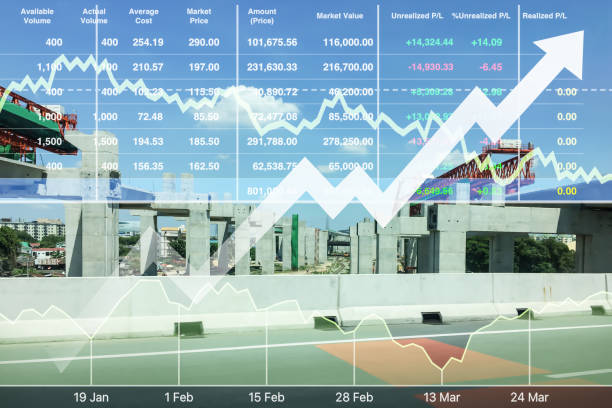
The headlines may tell us a lot about the current world economy, but they don’t always paint a complete picture. In this blog post, we will take a deeper look at some of the major trends and forces shaping the global economy, from economic growth to the latest developments in trade policy. We’ll look at how these trends can affect both developed and developing countries, and provide insight into what the future might hold.
1. Overview of current world economic trends
The current world economy is facing a unique set of challenges and opportunities. On one hand, there are signs of economic growth and recovery, with many countries experiencing an increase in GDP and job creation. However, on the other hand, there are also persistent issues such as income inequality and economic instability.
One major factor shaping the world economy is the ongoing COVID-19 pandemic. The global markets have been heavily impacted by the disruptions caused by lockdowns, travel restrictions, and supply chain disruptions. Many industries have suffered significant losses, while others have thrived due to the increased demand for digital services and healthcare products.
Another important trend is the shifting dynamics of international trade and supply chains. The pandemic has exposed vulnerabilities in global supply chains, prompting countries to reevaluate their dependence on certain regions and industries. This has led to a renewed focus on domestic production and a push for greater self-sufficiency.
In terms of major economic players, the United States, China, the European Union, and Japan continue to have a significant impact on the global economy. Their policies, trade relations, and technological advancements shape the economic landscape for the rest of the world.
Looking beyond the traditional economic powerhouses, emerging markets are becoming increasingly influential. Countries like India, Brazil, and Indonesia have seen rapid growth in recent years, presenting new opportunities for investment and trade.

2. Impact of COVID-19 on world economic
The COVID-19 pandemic has had a profound impact on global markets, causing disruptions and uncertainties across various industries. Lockdowns and travel restrictions have led to a significant decline in consumer spending, resulting in financial losses for businesses worldwide. Sectors such as hospitality, tourism, and retail have been hit the hardest, with many companies facing bankruptcy and widespread job losses.
On the other hand, certain industries have experienced a surge in demand due to changing consumer behavior during the pandemic. E-commerce, healthcare, and technology sectors have thrived as people turned to online shopping, telehealth services, and remote work solutions. Companies that were quick to adapt to the digital landscape and meet evolving consumer needs have been able to navigate the challenges and even find new opportunities for growth.
The pandemic has also exposed vulnerabilities in global supply chains, highlighting the importance of diversification and resilience. Many countries have realized their dependence on a few key suppliers and are now taking steps to localize production and reduce reliance on foreign markets. This has led to an increased focus on domestic manufacturing and a renewed interest in regional trade agreements.
As the world continues to grapple with the impacts of COVID-19, it is clear that the global markets will continue to undergo significant changes and adaptations. Businesses and policymakers need to be agile and responsive to the evolving situation, ensuring they have contingency plans in place and prioritize investments in resilience. Only by understanding the unique challenges and opportunities posed by the pandemic can we hope to rebuild and reshape the global economy for a more stable and sustainable future.

3. Shifts in international trade, supply chains world economic
The COVID-19 pandemic has caused significant disruptions in international trade and supply chains, prompting a shift in how countries approach global commerce. The pandemic exposed vulnerabilities in supply chains, with many countries realizing their heavy reliance on a few key suppliers. As a result, there has been a growing push for diversification and localization of production.
Countries are now reevaluating their trade policies and considering regional trade agreements to reduce their dependence on distant markets. This shift towards regionalization and localization aims to ensure greater resilience and reduce the risks associated with global disruptions.
Moreover, technology is playing a crucial role in transforming international trade and supply chains. Digitalization and e-commerce have skyrocketed during the pandemic, enabling businesses to reach customers globally and ensuring the continuity of trade. As a result, companies are increasingly investing in digital infrastructure and platforms to streamline their operations and adapt to the changing dynamics of trade.
Overall, the shifts in international trade and supply chains reflect a greater focus on resilience, diversification, and leveraging technology. By adapting to these shifts, countries and businesses can navigate the challenges presented by the pandemic and emerge stronger in the post-COVID global economy.

4. Analysis of major economic players (US, China, EU, Japan)
When it comes to the global economy, certain countries hold significant influence and shape the trajectory of worldwide economic trends. In this section, we will analyze the major economic players: the United States, China, the European Union (EU), and Japan.
The United States is the world’s largest economy and has a significant impact on global trade and finance. Its policies and decisions regarding interest rates, fiscal stimulus, and trade agreements have ripple effects on economies around the world. China, on the other hand, is the world’s second-largest economy and has been experiencing rapid growth in recent decades. Its manufacturing capabilities and massive consumer market make it a crucial player in global trade.
The European Union, as a collective entity, represents the world’s largest trading bloc. Its policies and regulations influence trade within the EU and with countries around the world. Finally, Japan’s economy is known for its technological advancements and innovation. Its automotive, electronics, and manufacturing industries have global reach and influence.
Understanding the policies and economic developments in these major players is essential for grasping the overall state of the global economy. As they navigate the challenges of the post-pandemic era and implement new policies, their actions will shape the economic landscape for years to come.
5. Discussion of emerging markets and their potential
Emerging markets are playing an increasingly important role in the global economy, with countries like India, Brazil, and Indonesia showing rapid growth and presenting new opportunities for investment and trade. These markets are characterized by a young and growing population, rising consumer spending power, and an increasing middle class.
One key driver of their potential is technology. Emerging markets have embraced digital innovation, leapfrogging traditional stages of development and adopting new technologies at a rapid pace. This has led to the emergence of thriving e-commerce platforms, fintech companies, and innovative start-ups. As a result, these markets are attracting attention from investors seeking high-growth opportunities.
Another factor contributing to their potential is their rich natural resources. Many emerging markets are rich in commodities such as oil, gas, minerals, and agricultural products. This provides them with a strong foundation for economic growth and exports.
However, it’s important to recognize that emerging markets also face challenges. These can include political instability, weak institutions, and infrastructure gaps. But with the right reforms and investments, these challenges can be addressed, unlocking the full potential of these markets.

6. Considerations for future economic growth and stability
As we look to the future, there are several key considerations for ensuring economic growth and stability on a global scale. One important factor is sustainable development. As the world faces challenges such as climate change and resource depletion, it is crucial to prioritize environmentally-friendly practices and renewable energy sources. By investing in green technologies and transitioning to a low-carbon economy, countries can promote both economic growth and environmental sustainability.
Another consideration is inclusive growth. Income inequality continues to be a pressing issue in many countries, and addressing this disparity is essential for long-term stability. Governments and businesses must focus on creating opportunities for all, including marginalized communities and disadvantaged populations. This can be achieved through policies that promote equitable access to education, healthcare, and job opportunities.
In addition, fostering innovation and entrepreneurship is crucial for future economic growth. Encouraging creativity and providing support for small businesses and startups can drive job creation and spur economic development. By investing in research and development, countries can stay at the forefront of technological advancements and maintain a competitive edge in the global economy.
Finally, collaboration and cooperation between nations is essential. In an interconnected world, no country can thrive in isolation. International cooperation on issues such as trade, climate change, and global health is crucial for maintaining stability and promoting shared prosperity.
By taking these considerations into account, we can pave the way for a future economy that is both robust and sustainable, ensuring a better world for generations to come.





